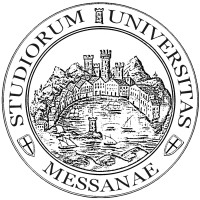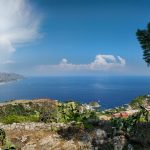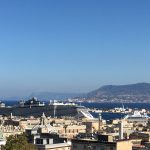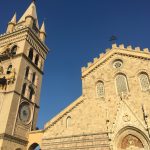The University of Messina is a popular destination for students looking to pursue a medical degree in Italy. The university offers medical courses in both English and Italian, and the program takes six years to complete. Nestled in a beautiful coastal city with a warm and calming climate, the University of Messina provides students with a unique opportunity to study medicine while enjoying the stunning views of a small and welcoming community. In this article, we’ll explore what it’s like to study medicine at the University of Messina and what the university and city have to offer for prospective students.
Content Quick Navigation
Timetable
When it comes to the timetable for studying medicine at the University of Messina, students can expect a heavy workload. Each class can last up to 2.5 hours, with one credit equaling 10-12 hours of work. This means that students will need to complete around 30 credits per semester, which can be a challenging task.
The academic year at the University of Messina runs from October until June, with a break in December. Other than that, there are not many breaks throughout the academic year. This schedule requires students to be diligent and disciplined in managing their time effectively to keep up with the rigorous curriculum.
While the timetable may be demanding, it provides students with a structured and organized learning experience, enabling them to develop the knowledge and skills needed to become successful medical professionals. Overall, the timetable at the University of Messina may be intense, but it prepares students for the challenges and demands of their future careers in the medical field.
The History of The University of Messina:
The University of Messina in Sicily was established in 1548 by Pope Paul III, but it began its activities in 1596. The university achieved high levels of education and boasted prominent professors in the fields of science, medicine, law, and philosophy, including Francesco Maurolico, Marcello Malpighi, and Giovanni Alfonso Borelli. However, the university was closed in 1678 due to political unrest and was later reopened several times.
In 1908, a devastating earthquake destroyed many of the university’s facilities, and 14 lecturers died under the ruins. Despite the difficult conditions, the university restarted its activities, and by the 1911-1912 academic year, there were 190 enrolled students attending the Faculty of Law and 29 attending the Faculty of Letters and Philosophy.
The Faculty of Sciences, Pharmacy, and Medicine reopened in 1914/1915, but due to the earthquake’s destruction, the clinics had a temporary location in the Civil Hospital. The university regained its dynamism by 1919-1920, with a total of 1,221 students, including those from other Sicilian provinces and Calabria.
Throughout its history, the University of Messina has been a hub of medical education and research, boasting prominent professors and world-renowned research facilities. Despite facing numerous challenges and setbacks, the university has persevered and continues to be a leading institution in the field of medicine.
Messina Minimum IMAT Scores
| Year | Minimum Score (Non-European) | European Scores (First/Last Round) |
|---|---|---|
| 2020 | 28.5 | First: 50.4 / Last: 38.9 |
| 2021 | 34.6 | First: 43 / Last: 33 |
| 2022 | 42.9 | First: 42.9 / Last: 33.8 |
| 2023 | 36.9 | First: 35.2 / Last: 33.0 |
Course Structure
| Course | Credit |
| Body Architecture | 5 |
| Cardiovascular and Respiratory Diseases | 14 |
| Clinical Laboratory Medicine | 8 |
| Clinical Semeiotics | 18 |
| Early Clinical Contact and Communication Skills 1 | 1 |
| Early Clinical Contact and Communication Skills 2 | 6 |
| Endocrine, Metabolic and Rheumatological Diseases | 11 |
| Gastroenterological Diseases | 4 |
| Genetics | 6 |
| Head and Neck | 11 |
| Hematology and Oncology | 11 |
| Histology and Embryology | 8 |
| Human Anatomy | 8 |
| Hygiene and Global Public Health | 8 |
| Imaging and Radiotherapy | 9 |
| Infectious Diseases, Skin and Sexually Transmitted Diseases & Plastic Surgery | 12 |
| Legal Medicine | 5 |
| Mechanisms of Disease | 12 |
| Medical Physics, Statistics and Bioinformatics | 10 |
| Microbiology | 5 |
| Molecular and Cellular Biology | 9 |
| Nephro-Urological Diseases | 6 |
| Neuroanatomy | 6 |
| Neurophysiology | 5 |
| Neuroscience | 12 |
| Obstetrics and Gynecology & Fetal Development Abnormalities | 7 |
| Orthopedics and Traumatology & Physical and Rehabilitation Medicine | 8 |
| Pathology | 11 |
| Pediatric Science | 11 |
| Pharmacology | 10 |
| Physiology | 7 |
| Practical-Evaluation Traineeship in the Medical Area | 5 |
| Practical-Evaluation Traineeship in the Surgical Area | 5 |
| Psychiatry and Clinical Psychology | 7 |
| The Living Matter | 12 |
The medical degree program at the University of Messina is a six-year program that provides a comprehensive medical education. The program offers a wide range of courses that cover various topics in medicine, anatomy, and physiology. While the total number of credits required to complete the program is around 360, the number of credits can vary depending on the specific curriculum offered.
Some courses in the program are mandatory and required for all students, while others are elective and optional. The elective courses allow students to specialize in particular areas of medicine, providing them with additional knowledge and skills that are relevant to their career goals.
The program is designed to provide students with a mix of theoretical and practical coursework, including hands-on training in clinical settings. Each course is assigned a credit value, with some courses being worth more credits than others. It is important to note that students must earn a minimum number of credits to graduate and move on to the next stage of their studies.
Overall, the medical degree program at the University of Messina offers students a comprehensive education in medicine, with the flexibility to tailor their studies to their interests and career goals. The program provides students with the knowledge and skills necessary to succeed in the medical profession and make a positive impact on the world of healthcare.
Exams
When it comes to the exam structure at the University of Messina, it is similar to other Italian universities. Students will need to pass an oral exam to earn credit for each course. However, before the oral exam, students must first pass an MCQ (Multiple Choice Questions) exam to prove their knowledge and understanding of the subject matter.
While some exams may only consist of MCQs, most exams at the University of Messina are oral exams. Students must prepare themselves thoroughly for these exams, as they are a significant factor in determining their final grade for each course.
One unique aspect of the exam structure at the University of Messina is that students must accept their exam score. Unlike other universities where students can reject their scores and retake the exam, at Messina, students must accept their score as their final grade. This is an important consideration for students to keep in mind when preparing for their exams.
Overall, the exam structure at the University of Messina is rigorous, and students must be well-prepared and ready to demonstrate their knowledge and understanding of the course material to succeed in their studies.
Tuition Fee and Scholarships
When it comes to tuition fees and scholarships at the University of Messina, there are some important considerations for prospective students.
For international students, tuition fees at the University of Messina are fixed at 750 EUR, which is an incredible value compared to other Italian universities. Italian students, on the other hand, pay tuition fees based on their socio-economic background, determined through the ISEE system.
The scholarship body in Messina is called ERSU, and unlike other universities, scholarship and grant awards are determined by grades. This is in contrast to universities such as Pavia, where the number of credits earned is the primary consideration for scholarship eligibility, with grades playing only a small role. Therefore, students who excel academically may have a better chance of being awarded scholarships and grants at the University of Messina.
Overall, the University of Messina offers affordable tuition fees for international students and an opportunity for outstanding students to earn scholarships and grants based on their academic achievements. This makes it an attractive option for students looking to study medicine in Italy without incurring significant debt.
Cost of Living
As with any study abroad experience, understanding the cost of living is crucial for students looking to pursue a medical degree at the University of Messina. While Messina is a smaller city than some other popular Italian destinations, it is still a bustling metropolis, and as such, expenses can add up quickly.
Accommodation is a significant expense for students, and shared apartments are the most common form of housing in Messina. Students can expect to pay around 300-500 EUR per month for a shared apartment, with rent varying depending on the location, size, and amenities of the apartment. It’s essential to keep in mind that living closer to the city center or university can be more expensive than living in the suburbs.
Food and dining out are also essential expenses for students to consider. While there are many affordable options for students to eat out, cooking meals at home can be a great way to save money. Grocery stores and markets are widely available, and students can expect to pay around 30-50 EUR per week for groceries, depending on their eating habits.
Transportation costs in Messina are relatively affordable. Students can use public transportation, such as buses and trains, to get around the city and surrounding areas. Monthly passes for public transportation can cost around 30-40 EUR per month, while individual tickets cost approximately 1.5 EUR.
It’s important to keep in mind that other expenses can add up quickly, such as entertainment, travel, and personal expenses. Students should consider these additional costs when budgeting for their living expenses in Messina.
In terms of entertainment, there are many affordable options for students to explore. The city offers a wide range of cultural attractions, including museums, theaters, and galleries. There are also many public parks and beaches where students can relax and unwind.
While Messina can be more expensive than other parts of Italy, it’s essential to keep in mind that it’s still an affordable option for students pursuing a medical degree. With careful planning and budgeting, students can enjoy all that Messina has to offer without breaking the bank. Overall, the cost of living in Messina can be manageable for students, and the city provides a unique and rewarding experience for those looking to study medicine in Italy.













